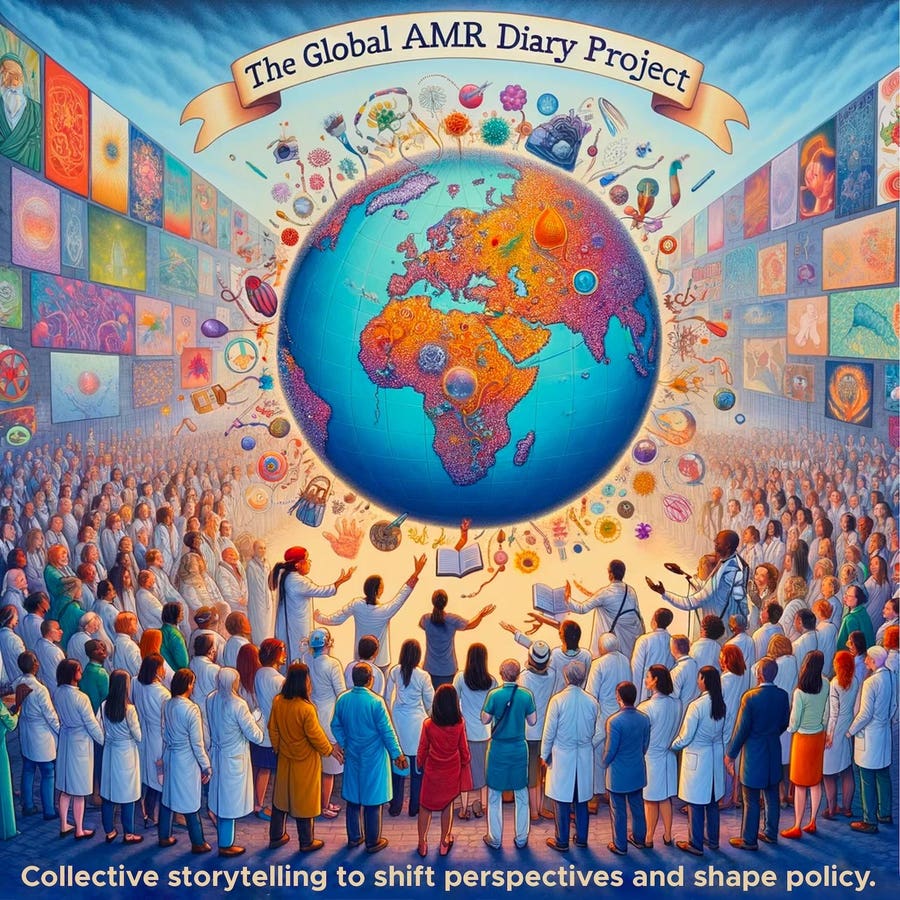Health
The Global Antimicrobial Resistance Diary puts a face to serious infections

The Global AMR Diary Project
Every day, people around the world die from normally treatable microbial infections, in numbers too high to comprehend.
What we feel when we hear that antimicrobial resistance was directly responsible for 1.27 million deaths worldwide in 2019 and contributed to 4.95 million deaths is too abstract and unrelatable. Our minds become numb and cannot hold the numbers. The same goes for education about the Holocaust – people cannot comprehend the magnitude of the six million Jews – and many Roma, gays, disabled and political dissidents – being slaughtered. Just like some in Education about the Holocaust has changed Thanks to the power of telling one person’s story, many of those fighting AMR are now doing the same. It makes the impact personal and leaves a lasting impression.
With this in mind, a new project is being launched today, The Global AMR Journal. The release is linked to the publication of Diary of a Dying Girl by Mallory Smith, who died in 2017 from a superbug infection. I wrote about Mallory’s story and the need to develop phage therapy to combat AMR in “Salt in My Soul…”
Mallory’s mother, Diane Shader Smith, is a relentless advocate for tackling AMR. One of the obstacles she identifies is that there is an “alphabet soup of acronyms” used by different agencies to describe AMR, which makes communication difficult.
Another is that, until now, patients’ stories have been spread across multiple locations and organizations. Why does that happen? How can we overcome this? The Global AMR Diary brings them all together under one roof, that of the Partnership to fight infectious diseases. The Global AMR Diary aims to change perspectives and shape policy around AMR by “transforming the AMR crisis from a distant concept to a recognizable and urgent reality.” Smith explained, “We learn more from the voices and experiences of people living and dying from AMR than from the bacteria themselves.”
Through her videos and extensive diary, Mallory was able to clearly articulate what it was like to live with both cystic fibrosis and the multidrug-resistant bacteria that ultimately killed her. Just as people around the world know what cancer is, Smith wants the concept and scope of AMR to be understood as widely as possible.
Smith also shares the stories of others to show that “no one is safe.” For example, Katy Granger went on vacation to Hawaii and got a small cut on her thumb. That led to sepsis and the loss of her legs and fingertips. Tori Kinamon was an undergraduate gymnast who developed a methicillin-resistant staph abscess in her thigh that led to multiple surgeries and complications. She went on to attend Duke Medical School and continues to do so research into infectious diseases.
Kevin Outterson is a law professor at Boston University and executive director of CARB-X, a global nonprofit accelerator focused on the most dangerous bacteria. He shared an additional perspective. And he too is focused on helping people understand the scale of the problem.
For example, he explained that infection is the second leading cause of death for people with cancer. Further, 28% of the global burden of all diseases are the result of infectionsAnd half of that (14% of the global burden) is due to bacterial infections. This is much more than the deaths caused by mycobacteria (TB), HIV and malaria combined. From a US-only perspective, the CDC stated the burden of infections (2019) as “more than 2.8 million antibiotic-resistant infections occur every year in the US, killing more than 35,000.” (“Antimicrobial” includes bacteria, viruses and fungi). The Covid-19 pandemic has made all this worse.
Outterson agrees that studies and reports contain too many statistics for people to absorb or understand. What he wants is for people to make the connection and say, “What happened to my loved ones is actually part of the bigger problem of bacteria.”
Professor Dame Sally Davies, the UK Special Envoy on Antimicrobial Resistance, shared with the AMR community that the aim of the Global Diary is to show: “Behind every statistic is a story – a real person with family and friends affected due to the global need for antibiotics.”
Again, you can read compelling patient experiences on the Global AMR Journal.













